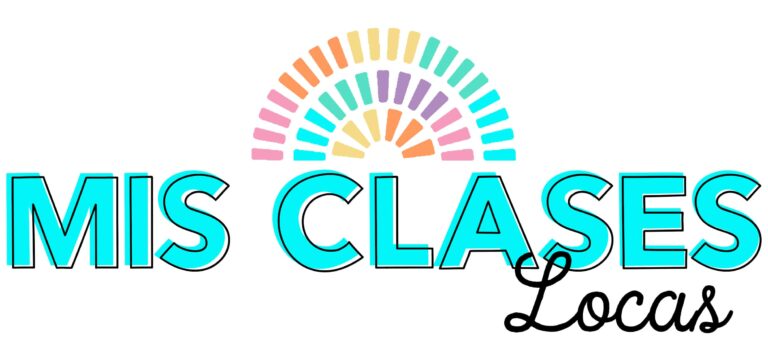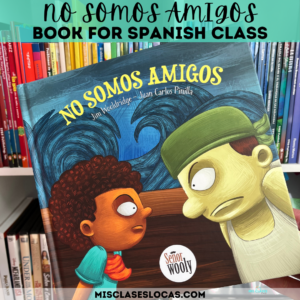Teaching your first novel can be a daunting task. Logistically it is quite different from the textbook chapters I was used to in the past. Some teachers integrate novels into an existing curriculum as a one day per week supplement, but I have chosen to use novels as the heart of my current curriculum. Using the novels with the teacher’s guides resources forms a complete cultural unit.

Before Starting
-
Get the teacher’s guide. The teacher’s guides have tons of great pre-reading discussions, during reading questions, post reading follow up activities and cultural expansion. They have been essential to saving my planning sanity and give more than enough ideas to make a novel a complete cultural unit.
-
Do not reinvent the wheel. Besides the teacher’s guide, check Pinterest and other teacher’s blogs for more inspiration on how to implement certain novels in class.
-
Front load vocab. It works best if you have used backward planning with stories to introduce important vocabulary before starting the novel.
-
Hook them with culture. Use a novel hook or excite students with fun cultural elements that will enhance their comprehension of the novel.
While Reading
What I struggled with at first was not what to complement the novel with, but how to actually read each chapter without it getting stale. Here are a few ways of how to mix up actually reading each chapter.
Teacher reads the chapter to the class
-
This is how I would suggest doing the first chapter or two, or even more for first time students or low levels. This is the preferred method for most students as they enjoy when I read with inflection, as well as pause to ask questions, expand and personalize. The issue is reading five classes in a row takes a toll on your voice and requires a lot of teacher energy. You have to vary your approach not just for student interest, but teacher sanity.
SPICE IT UP!
-
Students get to sit anywhere in the room while listening.
-
Everyone gets to bring in comfy blankets and pillows and lounges around the room.
-
Students sit on the floor around the teacher’s chair, similar to kindergarten style.
-
Have projected discussion questions on the board, that remind you to pause and talk about these topics, relating them to the students.
-
Read to students in a new location that fits the chapter, such as outside or in a dim auditorium for spooky ambiance.
-
These activities by Martina Bex would be perfect to use at the end of a chapter or novel to review the material.
Students read alone
-
This is not recommended for lower level classes right away. It has worked well having low level students read alone after the teacher has already read it to the class. As a review, students can start the day re-reading yesterday’s chapter.
-
Some upper level students prefer to read alone, as they do not like to be dragged down by reading at slower students’ pace. It works well to give upper level students the option to read alone, while also having the opportunity to read in a small group with the teacher.
SPICE IT UP!
-
While reading students jot down how they feel after each page or paragraph.
-
Students have a graphic organizer or story map to keep their focus on important events or character organization.
-
While reading students decide one change they would make to the story.
Students read in pairs
-
Some teachers have had great success with students “volleyball reading,” where they take turns reading a paragraph and then translating it out loud. This can be a good confidence builder to show students they understand more than they think. It works best when students have a task while with their partner as well to keep focus. I generally give students the option to read in partners or alone, for those who would rather read on their own. In some classes there are small groups who like to read together out loud.
SPICE IT UP!
-
While reading out loud to their partner they must use accents like the character. There can even be a competition for the best character portrayal.
-
Change the seating to side by side partners in a circle.
-
Students get to sit anywhere they are comfortable, also allowing other parts of the school or outside if possible.
Class listens to audio recording
-
The audiobooks are an amazing resource that I mistakenly rarely used my first year using novels. They allow for students to hear a native speaker and someone other than their teacher read the novel. It is a great refresher of a chapter after a weekend too. They are also a lifesaver when you lose your voice or are just plain exhausted and need a break.
SPICE IT UP!
-
Silent student actors portray what is happening during the book with props and costumes. Even more shy students like this option, because they do not have to actually speak. (A class favorite!)
-
Pause the audio like you would do while reading to discuss and personalize.
-
While listening, students draw a mural or storyboard of the chapter.
-
While listening, students have paper characters that they move, imitating movement in book.
-
Students follow along in their book with their finger while listening, jotting down questions, words they do not understand, or reflections.
-
While listening a second time, students move paper strips of events around in order.
-
Here are more of Kristy Placido‘s great ideas of using audio books.
After Reading a Novel
-
I usually ends a novel unit with summative assessments. This typically includes interpersonal speaking and presentational writing.
-
Interpersonal Speaking
-
Random pairs or groups discuss the novel by my desk.
-
Sometimes they have authentic pictures to help guide discussion or certain prompts, but others they simply ask each other questions about the book, what happened, what characters they relate to etc.
-
This was a very new concept for my students who were used to a typical grammar and textbook curriculum, but they soon warmed up to the idea of just showing what they know.
-
-
Presentational Writing
-
Assessments are completed individually, in class and on paper, so they can show what they know.
-
There are typically a few writing prompts to discuss to make sure that they reflect on the unit as a whole including music, movies, and other resources we added.
-
There are often choices of how to show their comprehension.
-
Many times I end with a book review where they must explain a summary, how they feel about it, what they would change, who they would recommend it to, etc.
-
SPICE IT UP!
-
Have students complete a Choice Project. Elizabeth Dentlinger has a great example of such a project for the novel Esperanza.
-
Students complete a non-traditional project, which all students present in a gallery walk style. Like at a gallery students float around listening to people talk about their projects and asking questions. I got the idea from La Calaca Alegre teacher’s guide and blogged about our assessment here.
-
Have students create a movie trailer to show what a movie version of the book would look like. I blogged about a Brandon Brown movie trailer.
More Resources
So far, I have taught the following novels in the levels listed. I am SO excited to be getting 10 new novel sets as a part of my curriculum budget this year to use!!!
- Brandon Brown Quiere un Perro (I & II)
- Tumba (I & II)
- Esperanza (II & III)
- Robo en la Noche (past) (II, III & IV)
- Felipe Alou (II, III & IV)
-
Spanish III – Literature Circles
- La Llorona de Mazatlán (III & IV)
- La Calaca Alegre (IV)
- Cajas de Cartón (IV)
-
Spanish IV – Literature Circles
Also, for more pre and post reading ideas, here are 5 Activities to Spice up any Novel.
What are other ways you mix up reading novels in class?
Other Novel resources you may enjoy





